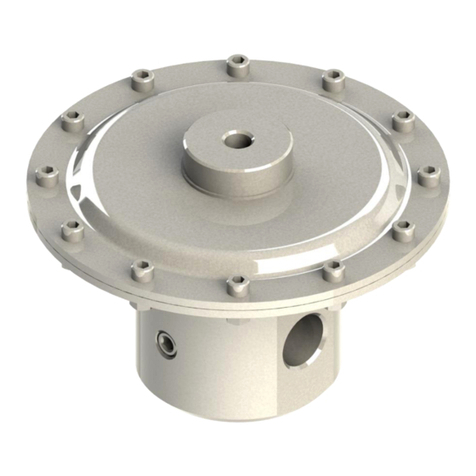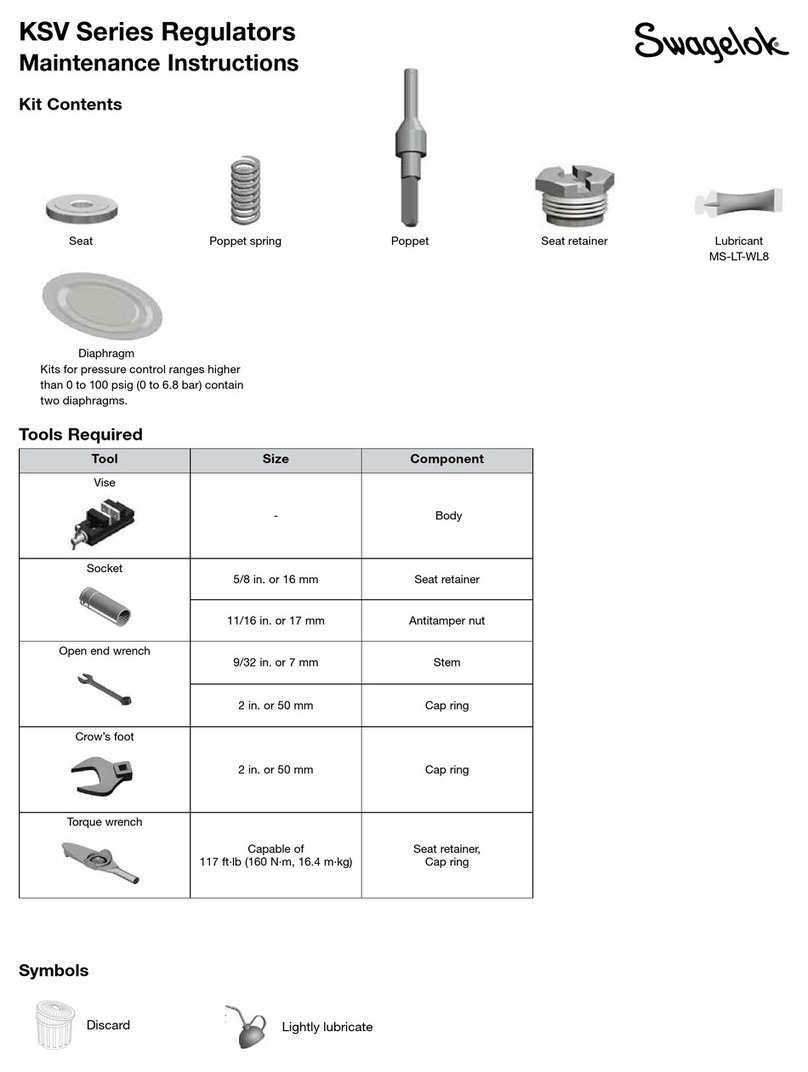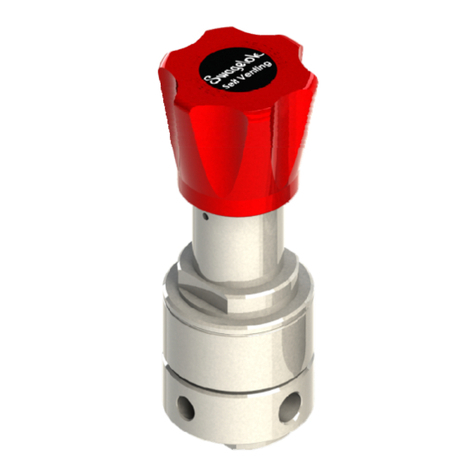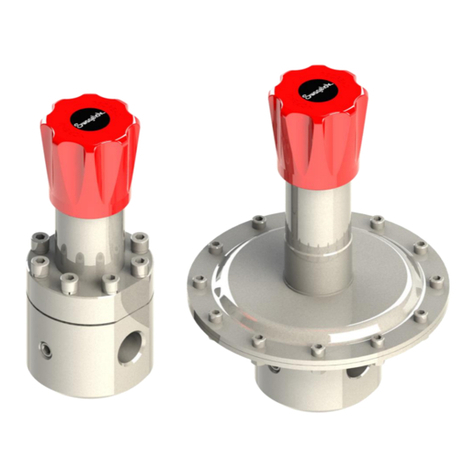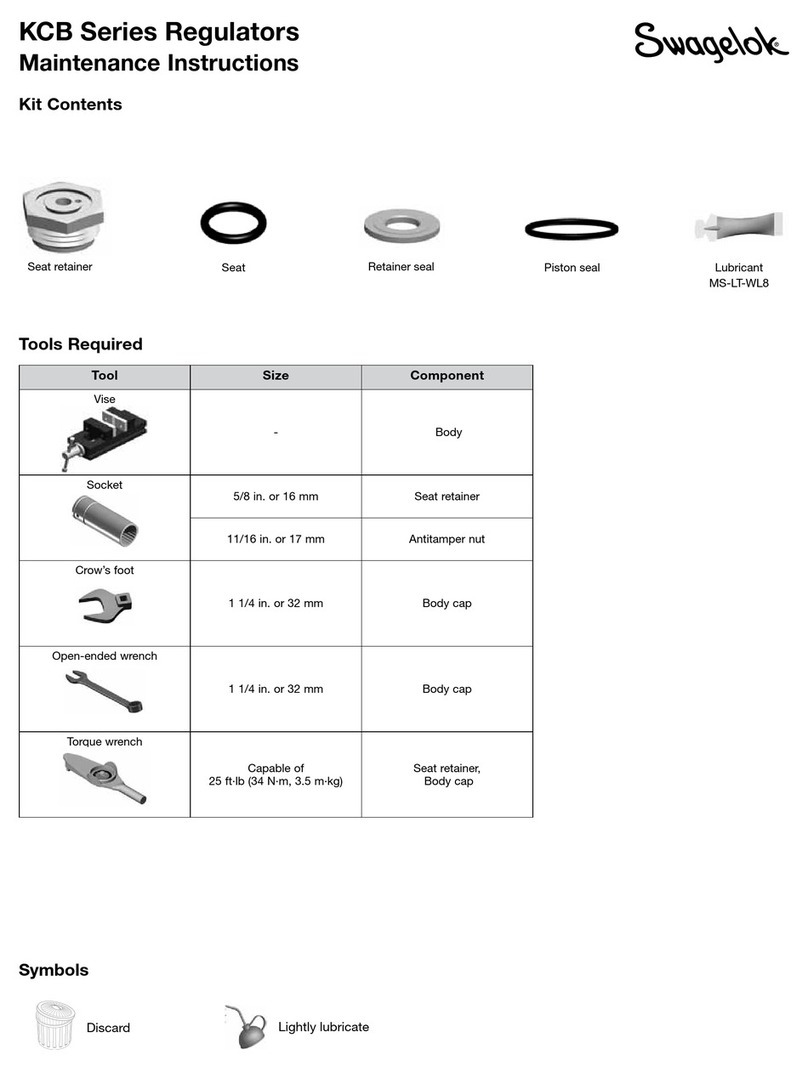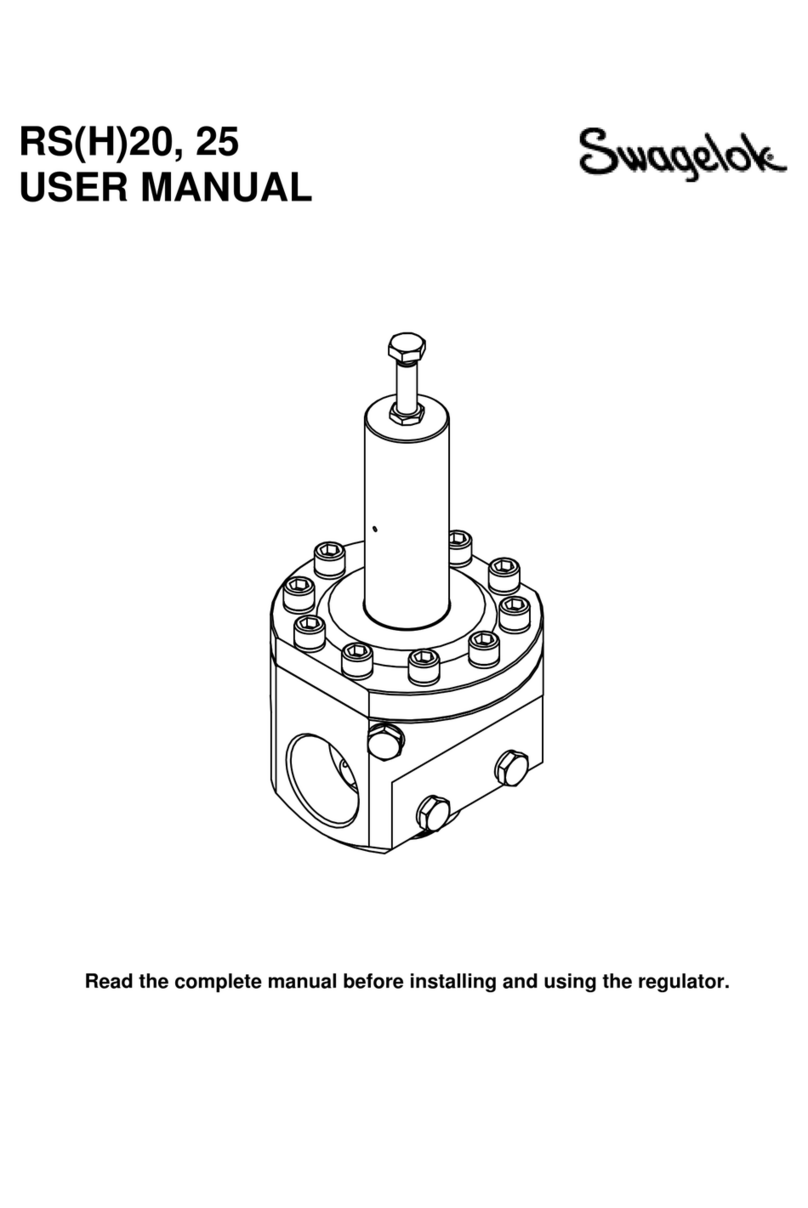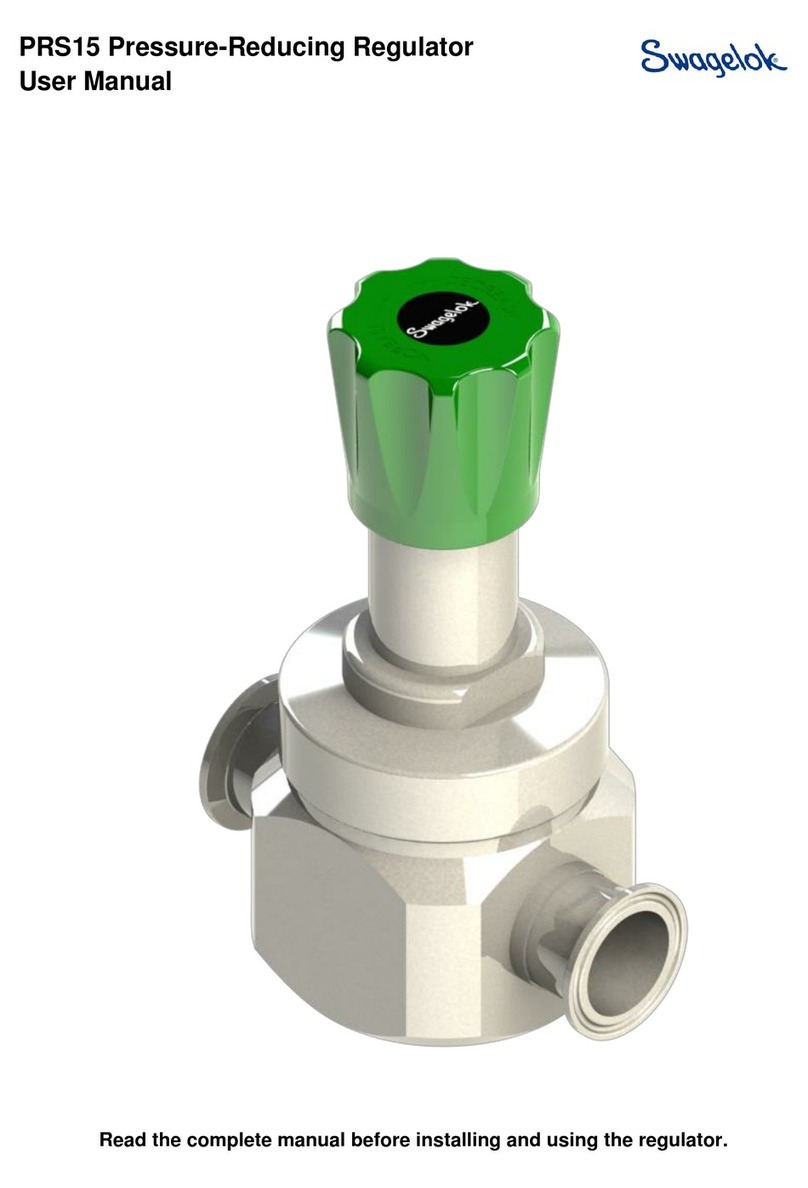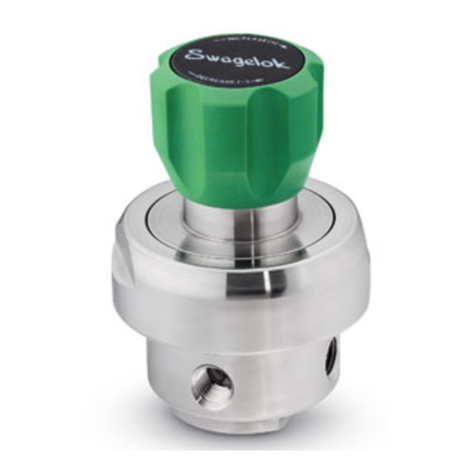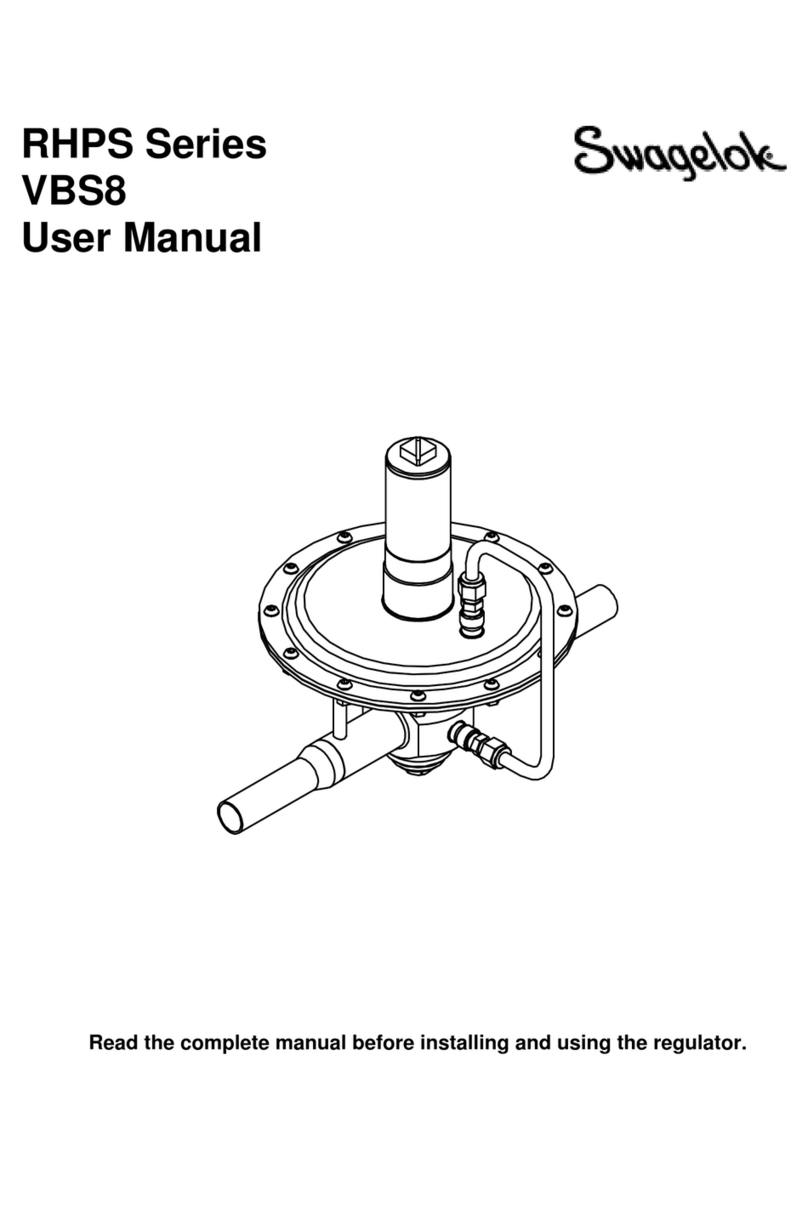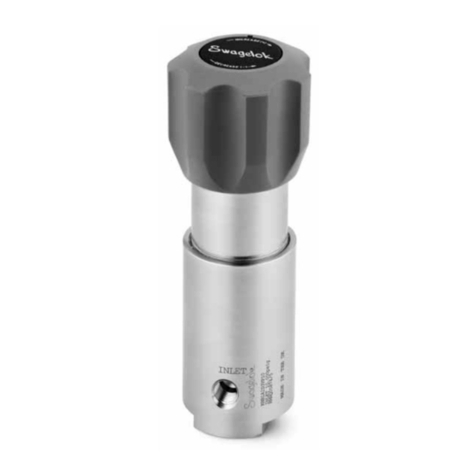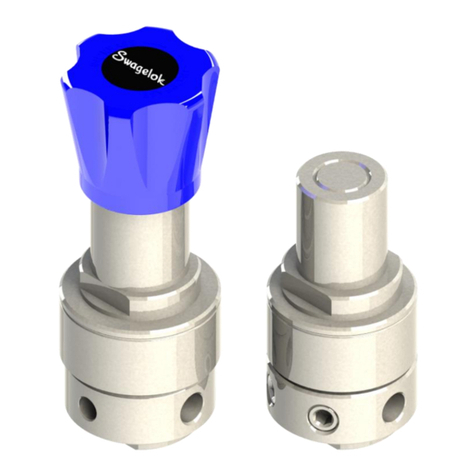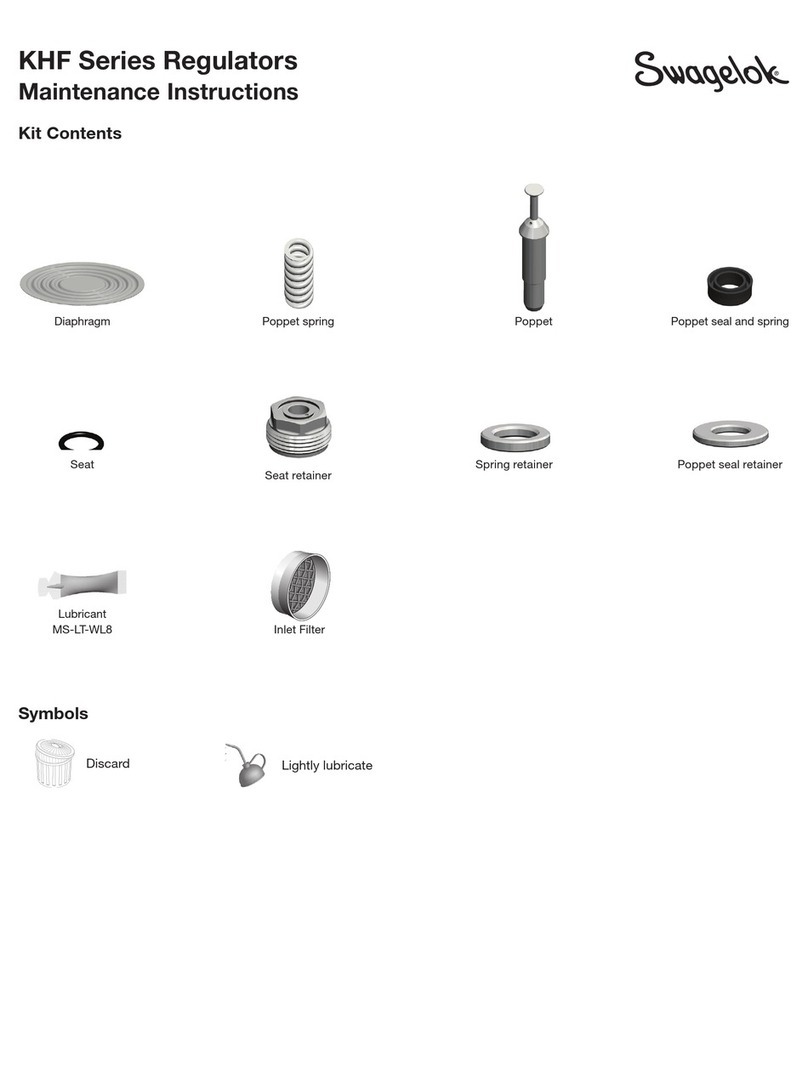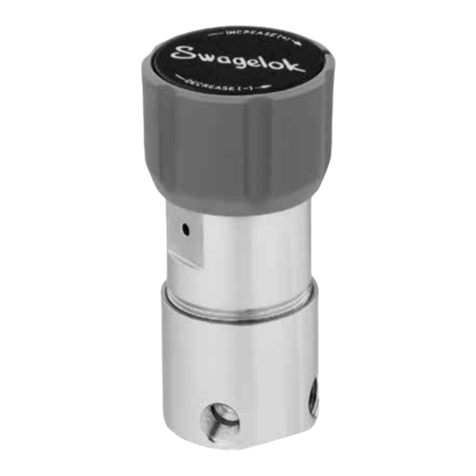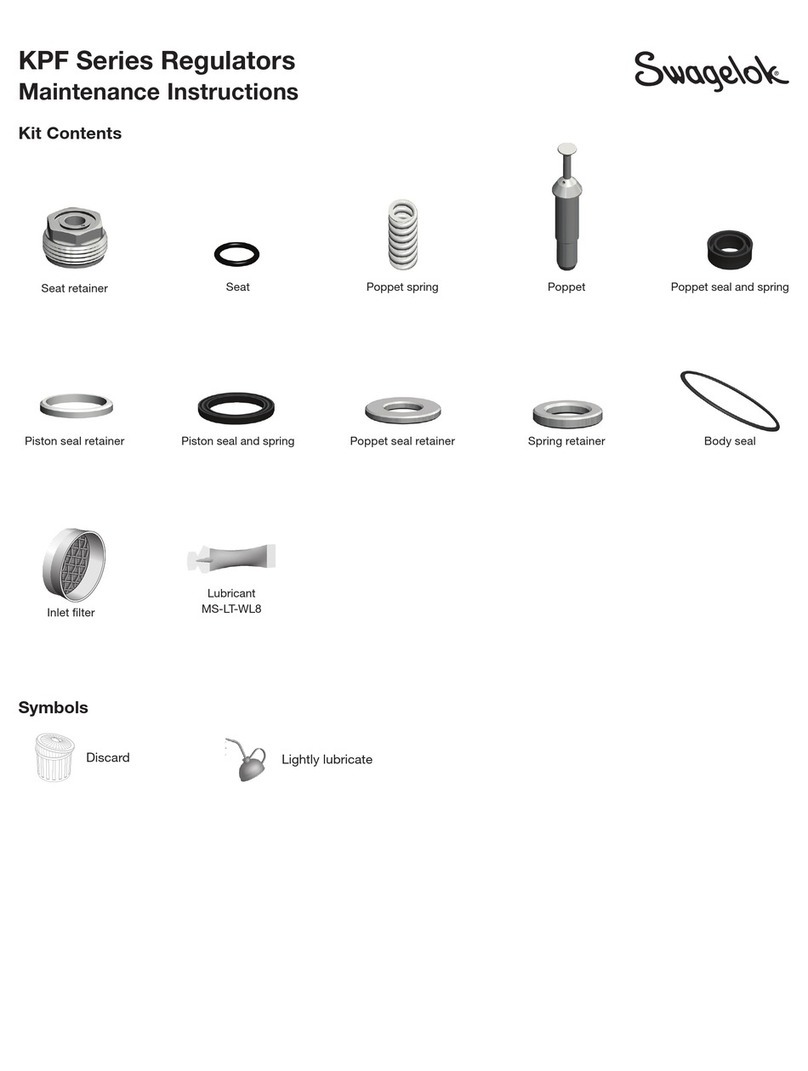3
LPRD20, 40 User Manual
Rev.date: 20-09-2010
2 Installation
2.1 Points of attention before installation
This regulator can be equipped with different options and connections.
Before installing the regulator you should fully understand the options and the suitability of your particular
regulator and its suitability for the application.
- The preferred mounting position of the regulator is horizontal with the dome facing upwards.
It may be necessary to remove the regulator from the system during maintenance or service.
Make sure that this is possible, especially if mounted in a different position.
- The regulator is suitable for gases. Check if the materials on the assembly drawing, which came
with the regulator, are compatible with the used media.
- SWAGELOK B.V. recommends not to use a self-venting version pilot regulator with hazardous or
toxic media.
If required take the necessary safety precautions to ensure a safe workspace and your personal
safety. Vent to a safe environment away from people and ensure adequate ventilation.
- Avoid sealing compounds which harden, be careful with anaerobic (loctite type) compounds.
Particles of these compounds can run into the regulator and lock moving parts.
- The product is designed to be used between -20 °C and +80 °C, whether ambient temperature or
media temperature. In all other cases consult SWAGELOK B.V..
- The regulator is standard not oxygen clean. Although all regulators are ultrasonically cleaned, this
does not make them suitable for oxygen use.
2.1 Oxygen service
- Specification of materials in regulators for oxygen service is the user’s responsibility.
SWAGELOK B.V. can perform cleaning for Oxygen service based on ASTM-G93LevelC/CGA4.1 at
additional cost.
2.2 Installation instructions
- Verify that the regulator, the connections and its accessories are undamaged.
- Verify that the regulator and its accessories are suitable for the system operating pressure and
have the proper connections.
- Carefully clean all pipes and connections. Any swarf, lint, wire etc. may cause seat leakage.
- Verify the flow direction of the system and mount the regulator accordingly.
- Securely make the appropriate connections to the regulator in accordance with the procedures
recommended by the manufacturer of the connections.
- Check if the in- and outlet flange is bolted in-line with the systems counter flange at a correct
preload, and check for leakage across the flange facings.
- Shut-off valves should be mounted in the system for service or maintenance.
- At the time of delivery, every unused gauge connection is plugged with blind fittings.
Remove these and connect gauges if desired.
- If earthing is required, connect an earth wire under a dome bolt.
WARNING
A PRESSURE REGULATOR IS NOT A SHUT-OFF VALVE AND SHOULD NOT BE USED AS SUCH.
